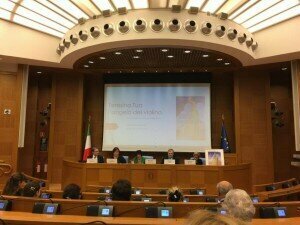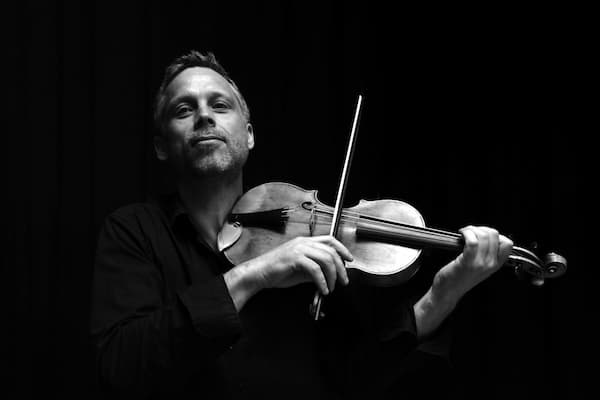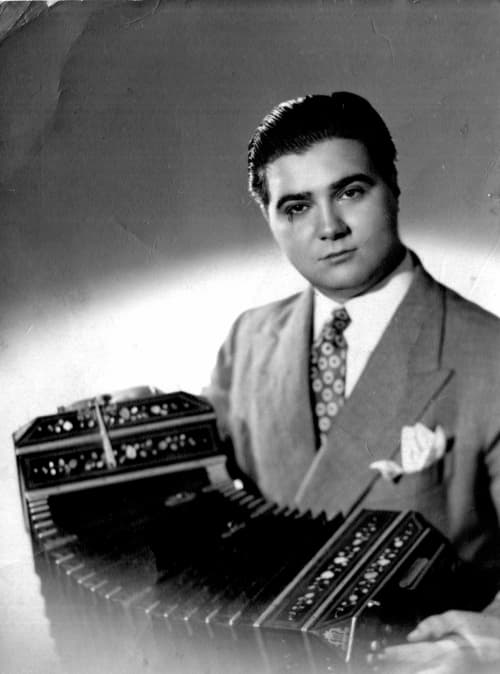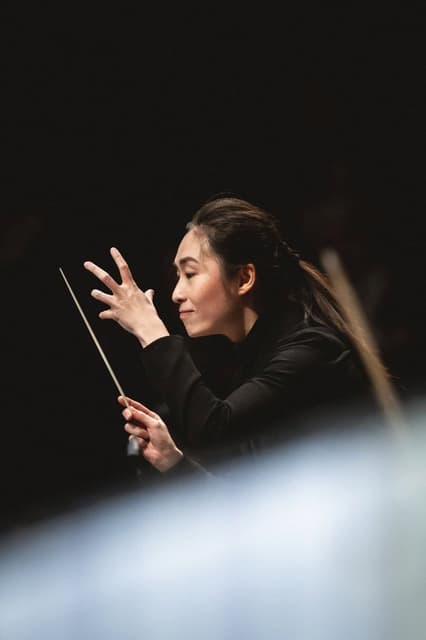 In a number of recent publications, musicologists Luca Bianchini and Anna Trombetta have investigated the countless myths and legends that elevated Wolfgang Amadeus Mozart into a singular musical genius. Attempting to set the record straight, the first part of our interview addressed questions of historical motivations, nationalism, and initial attempts at mythmaking by early biographers. In this second part of the interview, Bianchini and Trombetta continue to share their insights into the making of the Mozart Legend:
In a number of recent publications, musicologists Luca Bianchini and Anna Trombetta have investigated the countless myths and legends that elevated Wolfgang Amadeus Mozart into a singular musical genius. Attempting to set the record straight, the first part of our interview addressed questions of historical motivations, nationalism, and initial attempts at mythmaking by early biographers. In this second part of the interview, Bianchini and Trombetta continue to share their insights into the making of the Mozart Legend:
Q: The clumsy PR machinery set in motion by Leopold Mozart greatly obscured the fact that young Wolfgang was essentially a performer, and that he achieved musical maturity as a composer at a relatively late age. What can we learn from untangling these two conflicting—although clearly not unrelated—strands of musical activities?
A: The problem is serious. It is well known that Mozart did not have a proper education, neither in the scientific, humanistic or musical field. With whom did he study composition; who taught him counterpoint and fugue? Leopold Mozart, Padre Martini and the Marquis of Ligniville are cited as his only teachers. It turns out that Leopold never studied composition and was dismissed from University. Therefore, he could not teach harmony and counterpoint, and he was not a concert violinist either but started his career as a court valet. Information about Leopold comes from an anonymous and highly complimentary source. In the last few years it has been discovered that Leopold actually wrote the document himself! His son was certainly talented, but Leopold exploited him mainly as a performer, and as a brilliant improviser around Europe.
MOZART (actually by Mozart): K.15g for keyboard (London Notebook 1764)
It is said that he had extraordinary sight reading skills, but the Belgian composer André Grétry, who was able to meet and examine him, testified that Mozart didn’t read what was written on the page but rather invented it, demonstrating his skills as an improviser and not his knowledge of musical genres. There is no documentary proof that Padre Martini was ever Mozart’s teacher, and Ligniville, whom Leopold called the greatest counterpoint master of his time was in fact a music amateur who had graduated by correspondence, and who was famous for a treatise on silkworms. This lack of regular studies explains why Mozart was never completely original in the art of composition. He always had to refer to various models and his style changed over the years. Alongside masterpieces such as the Jupiter Symphony, he wrote in the same year, childish and amateur pieces like canons or dance music.
MOZART (actually by Mozart): K.554 Ave Maria
Q: Copying music–or as we nicely call it “borrowing” in the case of Handel, Puccini and others—was not only a customary way of learning the musical craft, but in the days before intellectual copyright one of the sincerest form of reverence. Why should we hold Mozart to a different standard?

Anna and Luca in Rome, Radio Vaticana
MOZART (actually NOT by Mozart; a forgery): XII Mass
Q: The essentially commercial process of ascribing unknown pieces to “best-selling” composers strongly came to the fore with the advent of music printing. Is it surprising that printers and publishers, specifically after Mozart’s death, jumped at the chance to present the world with “unknown” works?

Anna and Luca in Rome, Camera dei Deputati
There is also a major problem with the Mozart Köchel Catalog, which contains forged pieces, Renaissance music, Symphonies by other composers; in short, pieces that do not have a heading are attributed to Mozart. All the music in the Mozart household was catalogued as if it was his own, and that includes music Mozart had used for study purposes. A “Sonata of Verona,” which is probably by Galuppi, ended up being attributed to Mozart.
MOZART (actually NOT by Mozart, probably by Galuppi): Allegro for keyboard in G major
There are multiple problems of attributions when we study the works of Mozart’s contemporaries. After all, billions of dollars are at stake. A capillary network of theatrical and music societies, concert and record companies have invested huge amounts of money perpetuating the myth of Mozart the child prodigy. Everyone is interested in attributing more music to Mozart, even if it is clear that he had never written it. The Nazis attributed a lullaby to Mozart, just because it was a nice music. A Jewish musicologist showed that Mozart had not written the piece, but the Nazis claimed that it was by Mozart because that is what the German people wanted. And even today, in publications for young pianists, it is not rare to meet this lullaby presented to children as an authentic Mozart opus, just as the Ministry of Nazi propaganda wanted at the time.
MOZART (actually NOT by Mozart): Wiegenlied (Lullaby) Solo Piano
Q: A great many “deconstructing” studies have given us fresh and significant insights on composers and authors we thought we knew well. What revised picture—or as you call it “biography” of Mozart—has emerged as the result of your investigation?
A: Although more than 200 years have passed since Mozart’s death, he continues to be the subject of studies and his biographies have to be updated. Our approach wants to verify these sources and to consider the critical issues concerning attributions and biographical facts. Mozart biographers, until now, even though they were aware of contradictions and problems, have not really addressed them. The problem is that there are more than 2500 inaccuracies that we have reported in our two volumes Mozart: The Fall of the Gods, Parts 1 and 2. Over twenty years of study we have collected and commented on various problems reported in the vast Mozart bibliography, adding those that we ourselves have noticed, and allowed readers to verify them. Mozart emerges as a talented musician, but not a god. Just browse through any other book by Mozart and you find term like “genius,” “absolute masterpiece,” “miracle of nature,” even “god,” which are not scientific terms. Mozart’s image, as it has been transmitted over the last two centuries, is the result of Teutonic nationalism. In our books Mozart: The Fall of the Gods and The Magic Flute, we unearthed the facts, which are less miraculous but more real than what has been preserved under layers and layers of anecdotes, fables, and false myths. They are not books against Mozart, but against the nationalistic myths that the music industry has every interest in cultivating.





I have just finished reading ‘Mozart – The Fall of the Gods’, which is excellent! I would like to get part 2 now. Is it available in English?
I due autori in questione sono stati già ampiamente sbugiardati da autorevolissime voci in ambito mozartiano, tra cui il sopracitato Cliff Eisen, da loro stessi menzionato – con gran faccia tosta – come incoraggiatore delle loro sballate teorie. A me è bastato leggere qualche passo dei loro opuscoli per rendermi conto che capiscono poco o niente sia di musica in generale che di Mozart in particolare. Come si fa ad affermare (Mozart, la costruzione di un genio) che l’aria “Un bacio di mano” non può essere stata scritta per Albertarelli (celebre “Don Giovanni” mozartiano) perché “spinge troppo verso gli acuti” il registro di quest’ultimo? Ma scherziamo? Questi dimostrano di non conoscere nemmeno per sommi capi il Don Giovanni, si permettono di travisare le parole di Tyson e si dichiarano tra i massimi esperti mozartiani del pianeta. Fortunatamente la musicologia seria – vedi appunto Eisen – comincia a farsi sentire in proposito e a prendere opportunamente le distanze da queste baracconate.
Paolo Congia
The person who wrote the above comment is perchance Dr. Martin Jarvis, the author of the unscholarly book and film _Written by Mrs Bach_? If such be the case, it’s quite understandable why he calls Bianchini and Trombetta’s unsavoury and equally unscholarly rant “excellent”. The whole Bach pulp fiction was debunked by scholar Ruth Tatlow, A Missed Opportunity: Reflections on Written by Mrs Bach, in “Understanding Bach”, 10, 141–157 (2015); also available online.
You may find this link of some interest to you: https://bachnetwork.co.uk/ub10/ub10-tatlow-wbmb.pdf
This interview is three years old, but the nonsense keeps getting written. So just in case the algorithm gods have brought fresh readers here, to a site that usually trades in facts, heed this warning: There are no facts here. Bianchini and Trombetta talk as if scientific methods of manuscript analysis and historiographical criticism were just invented yesterday and that they are the first to apply them to Mozart, when both have been part of musicology for a long time. They are merely the loudest and most shameless of a recent crop of kooky conspiracy theorists and happen to be proficient in the “Gish Gallop” method of argument (Google it). Georg Predota should be ashamed of himself for being hoodwinked by this garbage pseudo-musicology.
Since 2017, there is a very learned and entertaining website dedicated to exposing the thousands of nonsense and lies contained in the writings of Mr Bianchini and his wife. Despite their vaunted diplomas, those fellows are not musicologists; rather peddlers of false information and pseudo-historical novels: “fake news”, as Professor Cliff Eisen of King’s College London put it earlier. No scholarly institution recognizes them; that’s why they have to print their brochures out of their own pockets: because no respectable publisher wants them. Pity that , an otherwise well-written and informative source, condescends to host their rants.
Proponents of fringe musicological theories tend to share some common characteristics with cranks in other fields of science:
a) Overestimation of their own competence in one or more of the musical styles under comparison, or their historical development, and underestimation of experts’ knowledge.
b) Claims that the purported style relationship is obvious and easy to perceive, not needing a painstaking application of comparative method or larger context analysis.
c) Failure to submit their results to peer-reviewed musicological journals.
d) Assertion that criticism towards their theories is motivated by traditionalism, political factors or dark conspiracy on behalf of the so told academic musicological establishment.